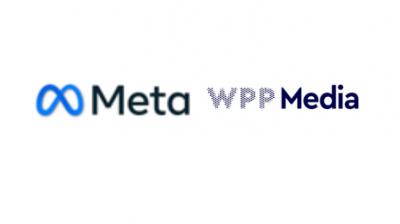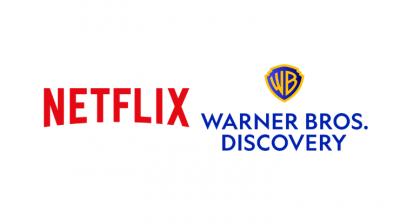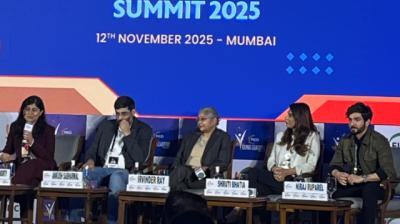Tourism Australia has rolled out the second leg of its 'Come and say G’day' campaign for India, with internet personality, entrepreneur, and philanthropist Sara Tendulkar joining the brand's animated ambassador Ruby the Souvenir Kangaroo as the face of the locally tailored initiative.
Launched on 20 August, the campaign is designed to strengthen the emotional connection Indian travellers have with Australia, highlighting the lasting memories of a holiday Down Under.
Conceptualised by Droga5 ANZ, the campaign will be rolled out in India across connected television, out-of-home, social, and digital advertising platforms.
The ad film for this campaign opens with Ruby the Souvenir Kangaroo asking a local Australian what travellers will remember most about Australia and what stories they will share with friends back home. Tendulkar then takes over, bringing to life the emotions and lasting memories that a trip to Australia creates. The film closes with Ruby’s reminder that everyone leaves with one good tale.
With India now ranked as Australia’s fifth-largest inbound tourism market and visitor expenditure crossing AUD $2.7 billion in the past year, Tourism Australia aims to sharpen its focus on the country through bespoke storytelling and strategic partnerships.
Whilst talking to Manifest, ahead of the campaign launch, Nishant Kashikar, country manager – India & Gulf, Tourism Australia, pointed out India’s strong growth trajectory.
The country has crossed a milestone of 4,50,000 visitors from India in the year to June 2025, an 8% increase over the previous year. He added that Indians are not just travelling and spending more (nearly AUD 2.7 billion, up 14%) but also staying longer, with close to 29 million nights in Australia, a 21% rise.
Kashikar also shared with us why Tendulkar was chosen for this second leg of the 'Come and say G’day' campaign, the metrics that matter most to the brand, and how collaborations with airlines and partners are helping scale the destination’s reach.
Edited excerpts:
What was the insight behind the new campaign for Tourism Australia, and why is Sara Tendulkar the right fit?
All our campaigns have been rooted in advocacy - real people sharing real stories, from inviting ‘Indians to Say G’day’ to showing why there’s nothing like Australia. When we launched ‘Come and Say G’Day’ in October 2022, borders had just reopened (after the pandemic), and Ruby the souvenir kangaroo became the face of a warm Australian welcome. The second phase builds on that, shifting focus to the memories travellers take home.
Sara Tendulkar, who has visited Australia since childhood, was a natural fit to lead this phase. Her deep connection, warmth, and authenticity mirror the values we associate with Australians. She also ticks our ‘six Rs’: reach, relevance, rise, resonance, reputation, and relationship, making her the ideal face to extend a personal invitation to Indian travellers to experience a holiday that lasts a lifetime.
What marketing levers are proving most effective in driving Australia’s appeal among Indian travellers right now?
We have set two main goals: drive demand and convert it. To build demand, we invest in social, digital, and connected TV advertising that resonates with high-value Indian travellers, along with international media hosting and content initiatives that keep Australia top of mind.
Conversion is just as vital, and we achieve it through airline, online travel agencies (OTAs), and distribution partnerships, plus our specialist program of 3,000 plus agents across India, guiding travellers from interest to booking.
In short, every effort - media, marketing, PR, or partnerships funnels into one goal: turning advocacy into demand and demand into conversion for Australia.
Beyond awareness, what conversion metrics are you tracking from India-focused campaigns?
We measure success on three levels, like a pyramid. At the top are our strategic KPIs - arrivals, spend, dispersal, and spend per person. The second layer is brand metrics, tracked quarterly through our consumer demand project with 1,500 high-yield Indian travellers. This covers awareness, consideration, intention, bookings, and perceptions of Australia on safety, nature, food, infrastructure, and access. The third layer is campaign metrics - ROI, cost of acquisition, share of search, reach, and attentive reach. Together, these feed into our strategic KPIs and show us when we’re hitting the mark.
For Tourism Australia, from where are you seeing the strongest ROI in your marketing mix? Is it digital, print, partnerships, or on-ground activations?
We follow an integrated approach. A strong international media hosting program builds consideration, while our digital campaigns on connected TV, OTT platforms, and across Google and Meta ensure we reach the right audiences. Out-of-home media at airports, luxury malls, and other high-footfall areas help build affinity and awareness for Australia. In addition, partnership campaigns with travel agencies and airlines strengthen ROI, making each investment more effective.
How critical are airline tie-ups and trade partnerships in scaling demand from India?
It’s critical because growth on the India–Australia route depends on added capacity, through more direct or one-stop flights. We work with carriers like Qantas and Air India to increase capacity and improve load factors so airlines see demand and expand further. With Indian airlines ordering 1,500 new aircraft, directing some of that capacity to Australia is a priority.
Ease of access matters too, so we partner with Home Affairs to make visas fast, digital, and almost entirely online, a major advantage.
Beyond direct carriers, we engage one-stop airlines like Singapore Airlines, Malaysia Airlines, Thai Airways, Cathay Pacific, Scoot, and AirAsia, ensuring multiple options. We then work with OTAs like MakeMyTrip to push fares and offers.
Airline partnerships remain central, amplified by OTAs to give Indian travellers more reasons to choose Australia.
Lastly, any blind spots in your current India strategy that you are trying to solve for?
Not really. The only thing we’d like to see is more aviation capacity directed towards Australia. That’s the only limiting factor or barrier, I’d say, that could prevent us from sustaining the kind of growth we’ve seen over the past several years. Ultimately, it all comes down to aviation access.










